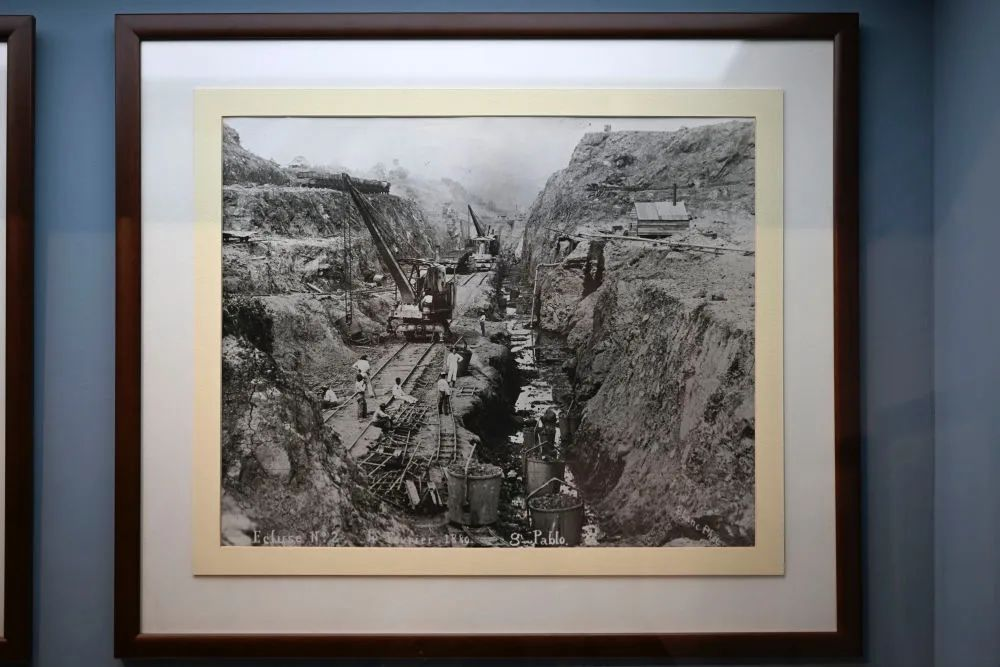The Panama Canal, one of the greatest engineering feats in history, is once again at the center of international debate. Former U.S. President Donald Trump recently reignited tensions by declaring the canal an “important national asset” of the United States and suggesting that it should be returned to American control. His remarks sent shockwaves through Panama, whose leaders swiftly rejected any notion of relinquishing their sovereignty over the waterway. But why is the canal so important, and what is the history behind this long-standing controversy? Let’s dive into the fascinating—and often troubling—story of the Panama Canal.

A Canal Born from Political Intrigue
The strategic importance of the Panama Canal cannot be overstated. Spanning 81.3 kilometers (50.4 miles), it links the Atlantic and Pacific Oceans, serving as a vital artery for global trade. But its history is steeped in conflict, colonization, and controversy.
The idea of a canal through Central America dates back to the Spanish colonial era, but the technology of the time made such an undertaking impossible. Fast forward to the 19th century, and interest in the project surged, particularly in the United States, which saw the canal as a way to strengthen its economic and military dominance.
Initially, the French attempted to build the canal in the 1880s, led by Ferdinand de Lesseps, the same engineer behind the Suez Canal. However, disease, financial troubles, and engineering challenges led to failure. Seeing an opportunity, the United States stepped in under President Theodore Roosevelt’s leadership. However, there was one problem—Panama was still part of Colombia.
The Birth of a Nation… Orchestrated by the U.S.
In 1903, when Colombia refused to ratify a treaty granting the U.S. rights to build the canal, Roosevelt took matters into his own hands. With U.S. backing, Panama declared independence from Colombia in a bloodless revolution, and within days, the newly formed country signed the Hay–Bunau-Varilla Treaty. This agreement gave the United States control over a 10-mile-wide strip of land across the isthmus—essentially creating an American-controlled “nation within a nation.”
The deal was highly unfavorable to Panama, granting the U.S. perpetual rights over the canal zone in exchange for a one-time payment of $10 million and an annual rent of $250,000. Construction of the canal began in 1904 and was completed in 1914, significantly reducing maritime travel times and solidifying America’s presence in Latin America.
A Century of Struggle for Sovereignty
For decades, Panama endured the indignity of having a foreign power control its most valuable resource. The canal zone operated under U.S. laws, with American military bases stationed there. Racial segregation and economic disparities between U.S. personnel and local Panamanians fueled resentment.
Resistance grew over time, culminating in a major turning point in 1964. Panamanian students attempted to raise their national flag in the canal zone, only to be met with violent repression by U.S. forces. The event, known as Martyrs’ Day, led to widespread protests and ultimately forced both nations to renegotiate the terms of U.S. control.
In 1977, President Jimmy Carter and Panamanian leader Omar Torrijos signed the Torrijos-Carter Treaties, setting a timeline for the gradual transfer of the canal to Panama. On December 31, 1999, the transition was finally complete, marking the end of nearly a century of U.S. control.
Trump’s Remarks: A Return to the “Big Stick” Era?
Trump’s recent comments echo the interventionist policies of the early 20th century, particularly Roosevelt’s “Big Stick” diplomacy. The suggestion that Panama should “return” the canal to the U.S. not only disregards historical agreements but also undermines Panama’s hard-fought sovereignty.
Since taking control, Panama has successfully managed and modernized the canal. The 2016 expansion, which added larger locks to accommodate massive cargo ships, demonstrates Panama’s capability to oversee this critical global trade route. Today, the canal contributes significantly to Panama’s economy, generating billions of dollars in revenue.
Panama’s response to Trump’s statement was swift and firm. President José Raúl Mulino rejected the notion outright, emphasizing that the canal is an integral part of Panama’s identity and is not up for negotiation. Panamanian scholars and diplomats also condemned Trump’s remarks as a dangerous return to imperialist rhetoric.
Lessons from History: Why This Matters Today
The Panama Canal saga is a stark reminder of how global powers have historically manipulated smaller nations to serve their interests. While the U.S. played a key role in the canal’s construction, it also imposed nearly a century of political and economic dominance over Panama. The eventual handover of the canal was a victory for national sovereignty and a symbol of post-colonial resilience.
Trump’s remarks may be dismissed as political bluster, but they highlight a broader question: Should powerful nations be able to rewrite history to suit their interests? The world has moved beyond the age of gunboat diplomacy, and any attempt to revive such tactics is likely to face strong resistance—not just from Panama, but from the global community.
As we reflect on this chapter of history, it’s crucial to recognize that control over strategic resources should never come at the expense of national dignity and self-determination. Panama’s journey from subjugation to sovereignty serves as an inspiration to all nations striving for independence and control over their own destinies.

No comments yet.